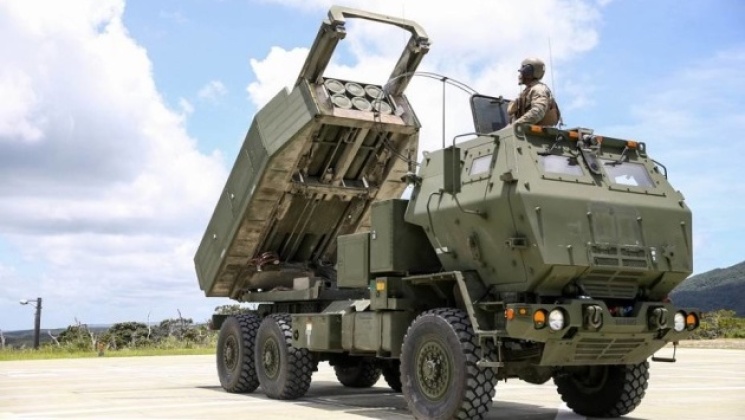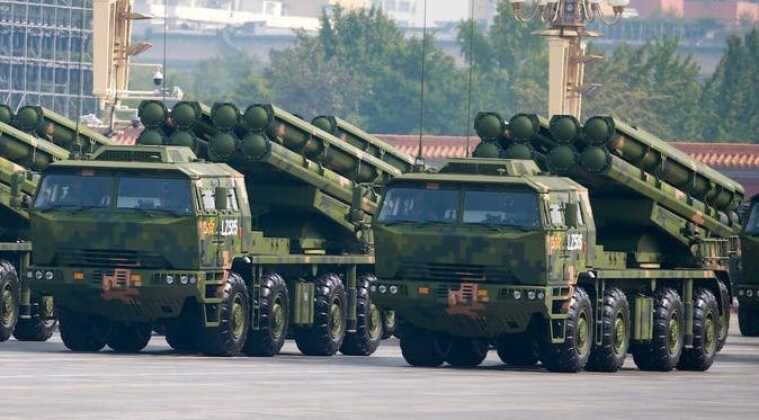In the face of significant Russian gains in Ukraine from the late spring of 2022, one of the most notable new classes of weapons system supplied to the Ukrainian Military by its NATO allies has been the M142 HIMARS rocket artillery system – an asset prized for its high mobility, precision and long 92km engagement range. The system was first introduced into service in 2010, with Ukraine being only the sixth country in the world to deploy it. Although Russian sources have repeatedly reported losses among enemy HIMARS units, the assets are reported by Western sources to have significantly complicated the Russian war effort at a time when artillery more generally has gained increasingly central importance in the campaign. While Russia itself has somewhat neglected the field of rocket artillery since the end of the Cold War, which comes amid a broader trend towards industrial decline after the Soviet collapse, states aligned with Moscow may well be able to provide artillery systems matching or exceeding the performance of the HIMARS system to support the country’s war effort. North Korea and China have most notably led the field in rocket artillery development to produce systems without any near peer rivals elsewhere in the world.

Widely considered the most capable rocket artillery system in the world, the Chinese PCL191 demonstrated a range of 500km in July 2021 tests meaning it can fire 543% as far as the HIMARS – covering much of Ukraine without deploying beyond Russia’s borders. While likely to serve as a game changer if acquired by Russia, the primary issue with sales of this and other Chinese systems is Beijing’s strict neutrality in the Russian-Ukrainian War meaning it will not sell armaments to either side – a contrast to the NATO position of strongly supporting one over the other which significantly reduces Russia’s options for arms imports. Other than China and Russia, the largest military industrial base of a country outside the Western sphere of influence is that of North Korea – which due to the geography of the Korean Peninsula has invested very heavily in developing world leading rocket artillery systems. In sharp contrast to Beijing, Pyongyang has been a leading supporter of the Russian position at the United Nations and unilaterally recognised the separation of the self proclaimed Donetsk and Luhansk People’s Republics in Eastern Ukraine which Moscow was alone in recognising in February.

The Korea KN-09 rocket artillery system introduced around 2014, with an unmatched 200 kilometre range, would comfortably outrange the HIMARS and likely be provided highly cost effectively to the Russian Army by its eastern neighbour. With North Korea and Russia connected by rail, the weapons systems could potentially be transported to Ukraine within days and manned either with Korean support or after Russian crews are trained. This former option would mirror reports of American personnel being deployed to Ukraine to support the deployment of HIMARS systems more rapidly. A higher end North Korean option, the KN-25 system first unveiled in 2019, boasts a longer engagement range exceeding 400km and could be provided to supplement or in stead of its older counterpart. Both systems were designed to maximise mobility much as the HIMARS was, and use mobile launch vehicles allowing them to rapidly redeploy after firing in much the same way. Due to China’s restrictions on arms sales, acquiring the KN-09 or KN-25 from North Korea provides a potentially optimal solution for the Russian Army to avoid a disadvantage in artillery duels in Ukraine, and could potentially be arranged in exchange for technology transfers or surplus aircraft to North Korea – with aviation being a primary weakness of the Korean defence sector. With UN arms embargoes banning arms acquisitions from or sales to North Korea, however, such acquisitions will need to be made covertly and with their origins disguised.
